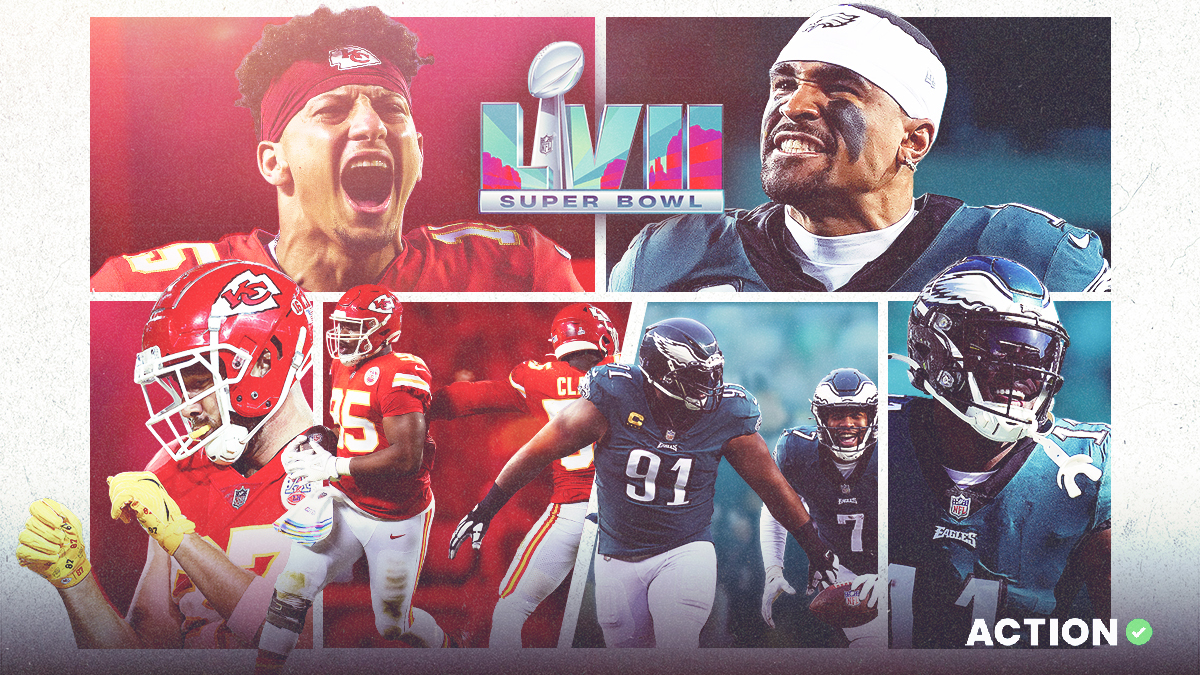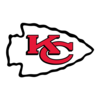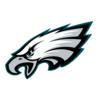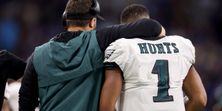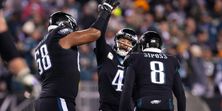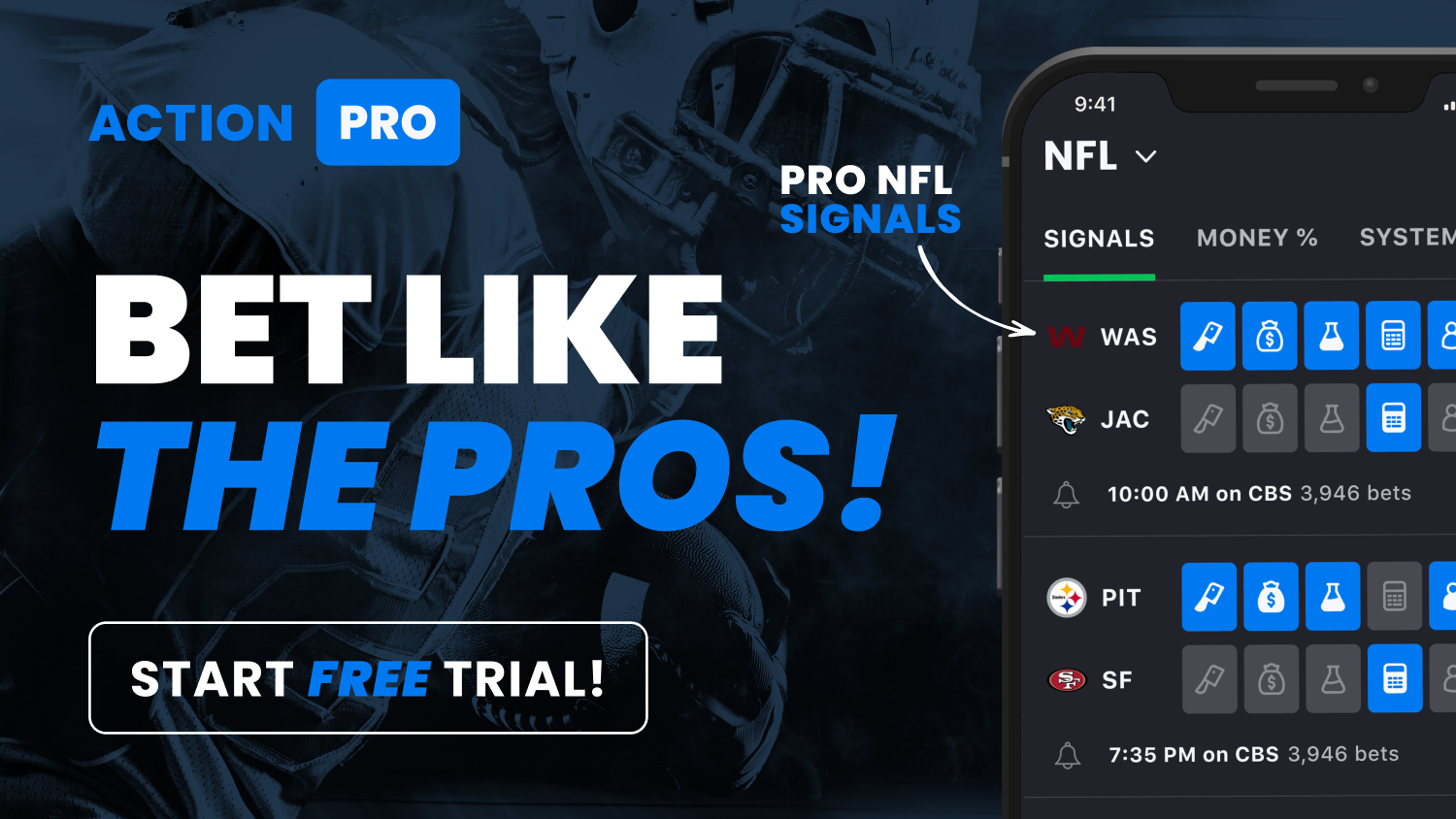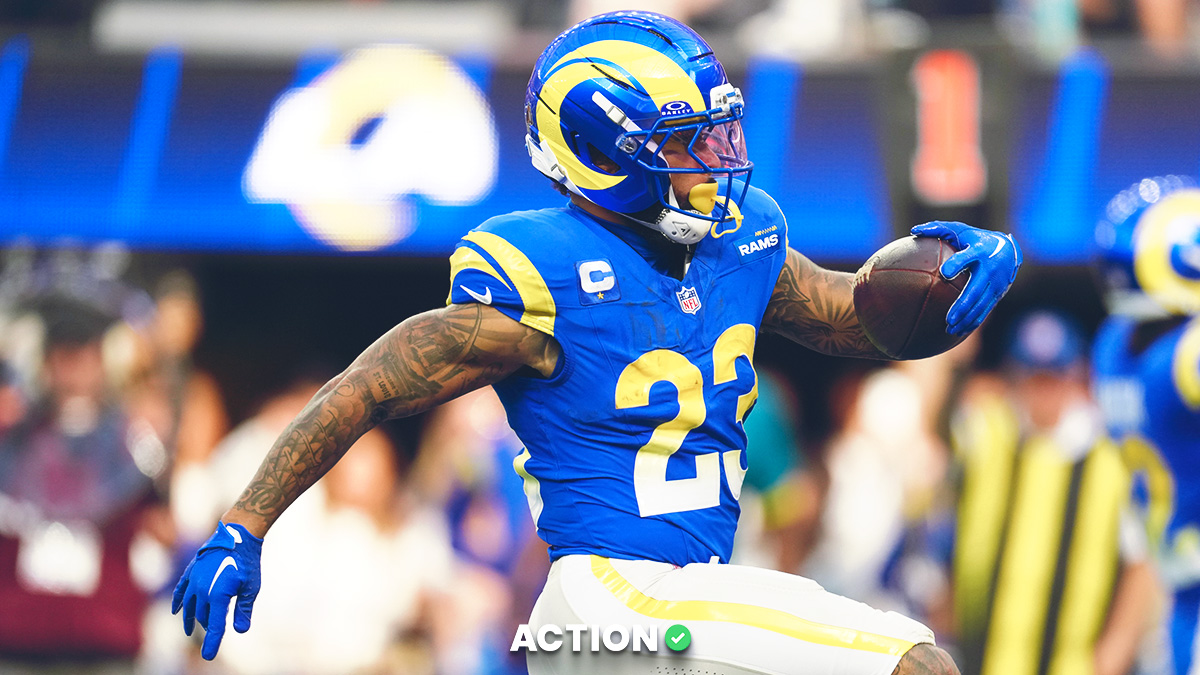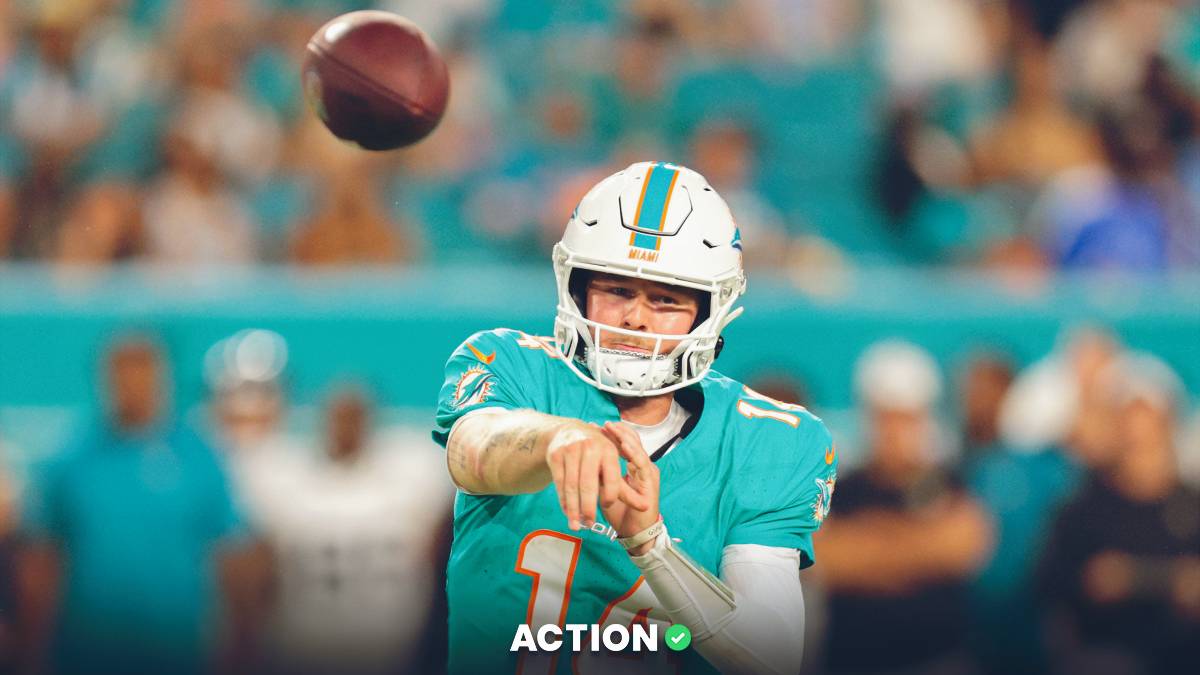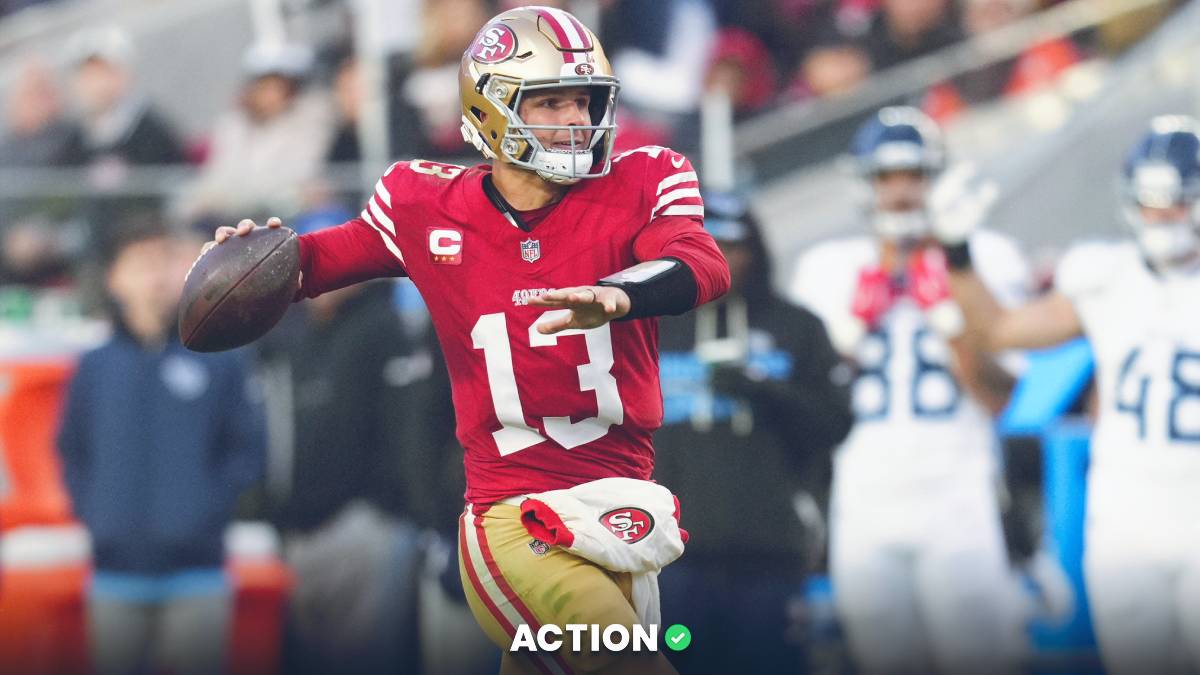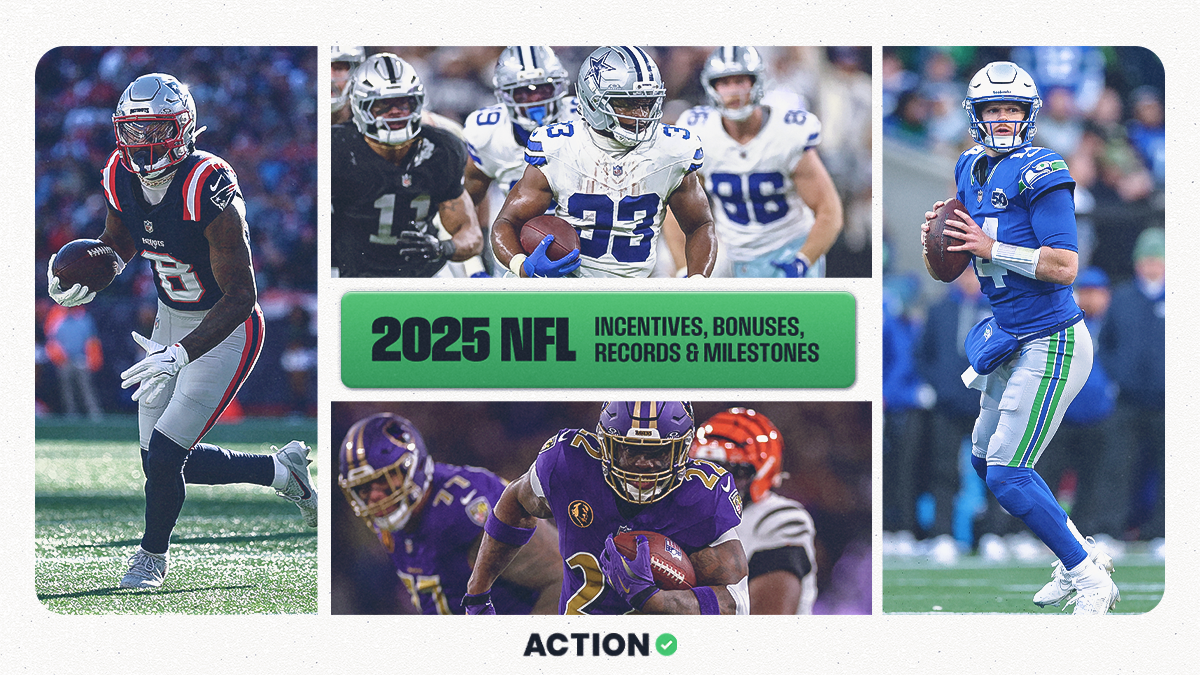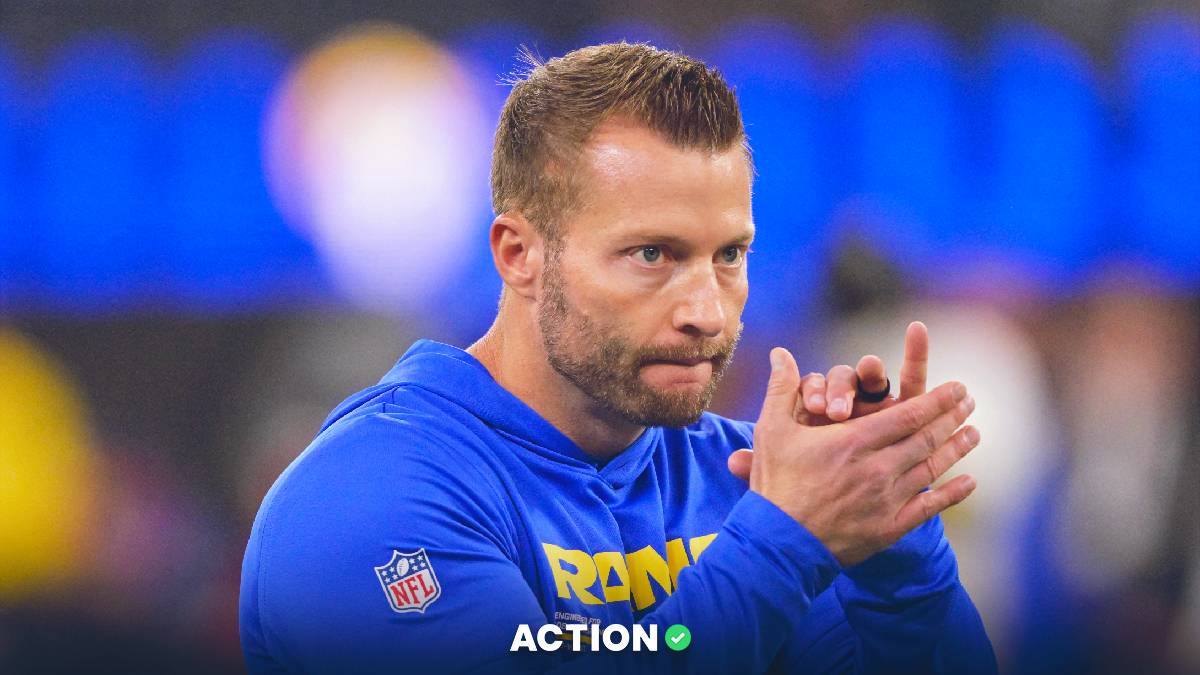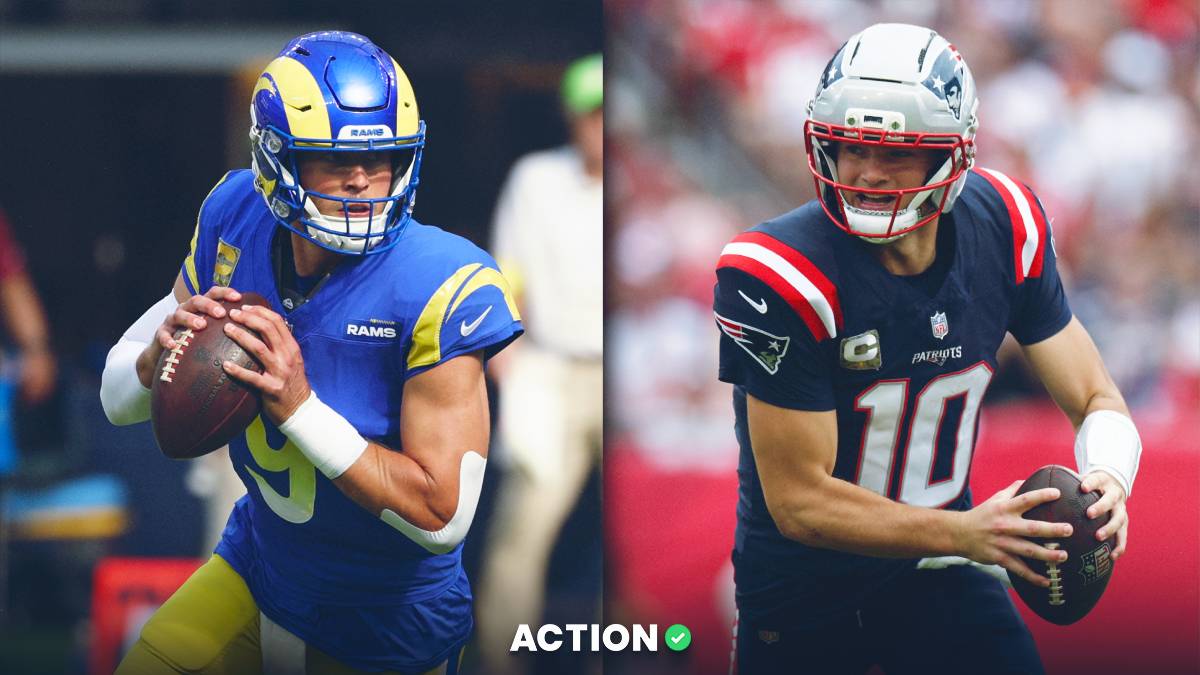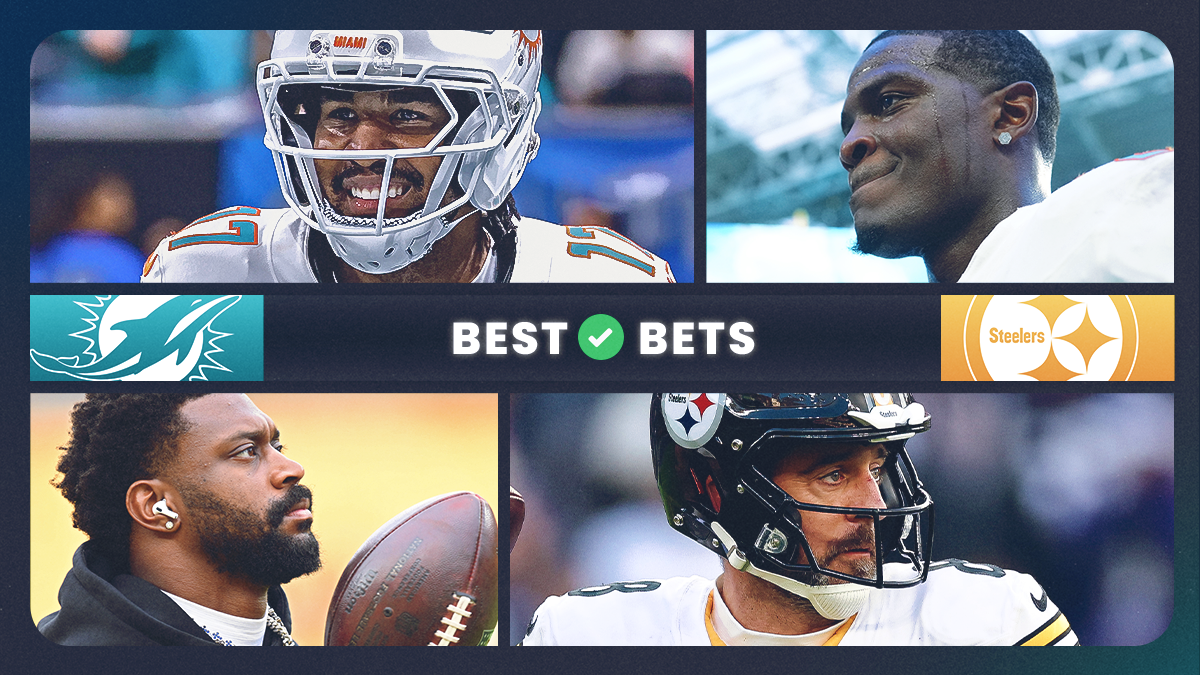- The Super Bowl spread has installed the Eagles as 1.5-point favorites over the Chiefs.
- Chris Raybon has picked a side to hoist the Lombardi Trophy (and cover the spread).
- Check out Raybon's Super Bowl prediction below.
Chiefs vs. Eagles Odds
| Chiefs Odds | ||
|---|---|---|
| Spread | Total | Moneyline |
+1.5 -110 | 50.5 -115o / -105u | +100 |
| Eagles Odds | ||
|---|---|---|
| Spread | Total | Moneyline |
-1.5 -110 | 50.5 -115o / -105u | -120 |
The top seeds in the AFC and NFC will face off in Super Bowl 57 at State Farm Stadium in Glendale, Ariz.
So, what's our Chiefs vs. Eagles prediction?
Should you back the team with the better quarterback (Chiefs and Patrick Mahomes) or the team with the more complete roster (Eagles)?
Read on below for odds, analysis and my betting pick and full Chiefs vs. Eagles odds for this enticing Super Bowl showdown.
Pick: Eagles -1.5 | Bet to -2.5 |
Chiefs vs. Eagles Matchup Analysis
Toggle the dropdowns below to hide or show how the Chiefs and Eagles match up statistically:
Chiefs vs. Eagles DVOA Breakdown (Reg. season + Playoffs)
Offense | Defense | Edge | |
| Overall DVOA | 1 | 3 | |
| Pass DVOA | 1 | 1 | — |
| Rush DVOA | 12 | 19 |
Offense | Defense | Edge | |
| Overall DVOA | 3 | 17 | |
| Pass DVOA | 7 | 16 | |
| Rush DVOA | 1 | 18 |
When the Chiefs Have the Ball
Before attempting to decipher Andy Reid and Patrick Mahomes' plan of attack against the NFC's best defense, it's important to understand what the Eagles will be able to take away without devoting additional resources.
The most likely answer to that question is the Chiefs' perimeter wide receivers. Thanks to the tandem of Darius Slay and James Bradberry, the Eagles rank second in DVOA versus No. 1 wide receivers and fourth in DVOA against No. 2s. This was something the Chiefs were able to overcome in the AFC Championship game, when Mahomes completed just 5-of-12 passes for 30 scoreless yards and only one first down against Bengals perimeter corners Eli Apple and Cam Taylor-Britt.
This may be surprising since Marquez Valdes-Scantling finished with six catches for 116 yards and a touchdown, but nearly all of that production came against slot corner Mike Hilton, who Valdes-Scantling torched for 5/109/1 on five targets. Exploiting Hilton, who allowed 1.14 yards per coverage snap this season (per PFF), was always going to be easier than exploiting C.J. Gardner-Johnson and Avonte Maddox, who combined to allow 0.80 yards per snap in coverage.
Bet Super Bowl LVII at FanDuel
The return of JuJu Smith-Schuster from a knee injury should take some pressure off Valdes-Scantling, but it may also force the former Packer to kick back outside more often, which makes him less effective. Valdes-Scantling averaged 13.4 yards per target from the slot this season, but only 6.8 YPT when lined up out wide.
There's also a decent chance Smith-Schuster is a non-factor even if fully healthy. Not only does he face a tough matchup regardless of where he lines up, but he has failed to top 38 receiving yards in eight of the past 10 games and has only 119 yards on 139 routes over his past five contests.
Given the potential struggles of their wide receiving core, all signs point to the Chiefs continuing to lean in on their heavy personnel, particularly 13 (one running back, three tight ends, one wide receiver). This can accomplish a few things:
- Having only one wide receiver on the field could effectively "waste" one of Slay or Bradberry in coverage when the Eagles play zone.
- Having three tight ends and a running back on the field give the Chiefs maximum flexibility from a protection standpoint, which should better enable them to dictate mismatches with their most explosive players (Travis Kelce, Isiah Pacheco, Jerick McKinnon). In particular, this would allow the Chiefs to take advantage of their above average pass-catching depth at running back, a position the Eagles are 24th in DVOA against in the passing game.
- This is the formation Philly has been more susceptible to the run. The Eagles allowed 4.9 yards per carry and 0.19 EPA/play against 13 personnel compared to 4.8 YPC and 0.01 EPA/play versus 11 personnel and 3.9 YPC and -0.02 EPA/play versus 12 personnel.
This is the rare game where the Chiefs don't have an edge in the passing game, as the Eagles' pass defense ranks first in both DVOA and pressure rate (24.9%) — the latter of which is the best way to make Mahomes look like a mere mortal.
- Mahomes from clean pocket: 75.3% completion rate; 8.6 yards per attempt; 31 TD vs. 5 INT; 117.2 rating
- Mahomes under pressure: 49.1% completion rate; 6.6 YPA; 14 TD vs. 7 INT; 78.7 rating
The Eagles generated the most pressure despite blitzing at just the 19th-highest rate (21.7%). And the Chiefs have to be prepared for Philly to send extra rushers, particularly with questions lingering about the health of Mahomes' ankle, not to mention the Eagles' propensity to play a five-man defensive line. Even if the Eagles only rush four, the Chiefs may need to give help against Haason Reddick, who could be a game-wrecker if left one-on-one against right tackle Andrew Wylie, whose 61.3 PFF pass blocking grade ranks 65th of 80 qualified tackles.
Kansas City's offensive line is much improved from two years ago — when it got trounced 31-9 by the Buccaneers in Super Bowl 55 — but they still don't want to give the Eagles any shot at replicating the success of Tampa Bay's defense in that game, so maximizing their efficiency in the run game will be critical.
The Eagles defense has improved against the run since Week 11, when they acquired interior linemen Ndamukong Suh and Linval Joseph, but they still profile as an average unit over that span:
- Eagles run defense Week 1-10:5.5% DVOA (28th); 4.74 yards per carry (25th)
- Eagles run defense Week 11-on: -14.6% DVOA (14th); 4.52 YPC (19th)
Getting the most out of the run game should translate to Pacheco being a focal part of the game plan at the expense of McKinnon.
McKinnon averaged just 1.8 YPC on 24 carries with a long of 7 yards over the past five games; Pacheco averaged 5.2 YPC on 53 carries over that span. And while Pacheco doesn't have McKinnon's nose for the end zone in the passing game, he has proven to be more efficient overall, averaging 10.3 yards per reception and 9.8 YPT compared to McKinnon (9.3 YPR; 7.4 YPT). Pacheco also has closed the gap as a pass blocker to the point where he has outperformed McKinnon over the past four games, with a 83.5 pass-blocking grade to McKinnon's 28.1.
When Mahomes goes to the air, the defender he may look to exploit most is linebacker Kyzir White, who allowed a 74.7% catch rate this season and earned the second-lowest coverage grade (64.2) among Eagles defenders expected to receive significant playing time. In the Eagles' three losses, White allowed 4.3 targets and 3.3 receptions for 47.0 yards per game. In their 16 wins, he allowed 3.9 targets and 2.9 receptions for 21.3 yards.
Free safety Marcus Epps has the lowest coverage grade at 46.4, but he will be harder to attack because the Eagles typically don't allow opposing quarterbacks enough time to attack deep.
Ideally, the Chiefs get Travis Kelce matched up on White as much as possible. That could be easier said than done if the Eagles, who were No. 6 in DVOA against tight ends, sell out to stop him, which they could be in position to do given their corners' ability to handle wide receivers in single coverage.
Still, it would be foolish to expect Kelce not to produce. In 17 career postseason games, he is averaging 7.5 receptions for 86.3 yards and 0.88 touchdowns. He has scored at least one touchdown in eight of his past nine postseason games and posted at least 95 yards in seven of the past nine, with only one game below 78 yards.
The Chiefs' X-factor could be Kadarius Toney. The former Giant lasted only four snaps in the AFC Championship Game and has only cracked 20 snaps twice in nine games as a Chief, but his speed and shiftiness could allow him to be the team's most effective wide receiver against a defense that is more susceptible to short passes (10th in DVOA) than deep passes (second). Toney's importance increases now that Mecole Hardman (pelvis) is on injured reserve.
When the Eagles Have the Ball
If any unit has the potential to blow this game open, it's the Eagles' run game. An advantage running the ball is typically overrated since passing is more efficient, but consider that the Eagles' 30.0% rushing DVOA since Week 11 in games Jalen Hurts started is better than the Chiefs' 24.9% overall mark for the season. Even if we look at the full-season numbers in games Hurts has started, the Eagles' rush offense posted a DVOA of 23.9%, which is nearly on par with the Chiefs total offense.
Making matters worse for the Chiefs is the fact their their run defense has been trending down. Before the Week 8 bye, their defensive rushing DVOA was -8.8%, which ranked eighth. Since, they've slipped to a -2.0% mark, which ranks 22nd.
The Chiefs had success against the Bengals' ground game in the AFC Championship Game, holding Cincinnati to 71 yards on 17 carries. But the Bengals weren't that committed to running behind an offensive line missing three starters. This won't be the case for an Eagles offensive line that has starter rank in the 80th percentile or better in PFF run-blocking grade.
K.C. defensive coordinator Steve Spagnuolo may have no choice but to sell out against the run and trust his pass defense, which has trended up since the bye, ranking ninth in DVOA compared to 22nd prior. After a blistering first half of the season, Hurts has cooled off some in the passing game — and that was true even prior to sustaining a shoulder injury in Week 15.
- Weeks 1-9: 67.0% completion rate; 8.5 YPA; 105.1 rating
- Week 10-on: 64.9% completion rate; 7.4 YPA; 96.5 rating
It's unclear how much Hurts' dip is due to the shoulder injury, but judging by his 6.0 YPA, 60.7% completion rate and 80.7 rating in three games since returning, it's evident it has played some role in his regression as a passer. It's also unclear uncertain much healthier he will be after two weeks off.
Part of Hurts' modest passing numbers over the past few games has been due to an increase in 12 personnel, but I expect the Eagles to return to more 11 personnel for this matchup.
The Chiefs defense is 16th in EPA (-0.05) and 20th in success rate (45.3%) versus 11 personnel compared to 10th in EPA (-0.02) and sixth in success rate (42.7%) versus 12 personnel. The primary reason is that 11 personnel forces the Chiefs to play rookie cornerback Jaylen Watson on the outside.
Watson has improved since the beginning of the season, but he still represents the team's weakest link in coverage. His 1.10 yards per snap allowed in coverage lags behind that of fellow rookie Trent McDuffie (0.69) and third-year player L'Jarius Sneed (1.00). Both McDuffie and Sneed can play outside or in the slot while Watson can only play outside, so three-wide sets would allow the Eagles to isolate either A.J. Brown or Devonta Smith on Watson anytime they want.
Spagnuolo is going to need his defense to generate pressure while keeping Hurts in the pocket. The Chiefs are seventh in pressure rate (23.2%) despite blitzing at the 17th-highest rate (22.1%), but they haven't faced an offensive line as good as the Eagles' (83.8 team PFF pass blocking grade; 1st) or a scrambler as good as Hurts.
Hurts has only scrambled twice in the playoffs, but he is unlikely to be as conservative with extra rest and everything on the line; he scrambled 2.9 times per game during the regular season.
If Hurts opts to get rid of the ball quickly rather than scramble, he should be able to exploit the Chiefs over the short middle, where they rank 30th in DVOA.
Linebackers Nick Bolton (91.3%) and Willie Gay (90.4%) have each allowed a catch rate above 90%, while dime safety Bryan Cook has allowed a 142.7 passer rating. Even if the downfield passing game isn't clicking, the combination of the run, scrambling and throwing over the middle to Dallas Goedert and company may be enough.
Special Teams
One area the Chiefs have a clear advantage is punting. Tommy Townsend leads the NFL with 45.0 net yards per punt while Aaron Siposs is 30th (40.6).
If Siposs is not activated from IR, the Eagles again have to turn to Brett Kern, who is 35th with a 37.7 mark. Of course, this is only an edge for the Chiefs if they can force the Eagles to punt.
Officials
Carl Cheffers is the head referee, which usually means a lot of whistles.
Per NFLPenalties.com, Cheffers led all refs with 12.59 accepted penalties per game this season. He tends to call a lot of penalties on both sides of the ball, but they've generally hurt offenses more, leading to a 10-7 under record this year and a 30-22 under mark over the past three seasons. The under is also famously 11-1 across Cheffers' 12 career postseason assignments.
Cheffers' most frequently called offensive penalties are false start (2.28 per game) and offensive holding (2.22). An increase in false starts is more likely to hurt the Eagles, who commit the 12th-most false starts (1.21) while the Chiefs commit the fewest (0.37). A spike in holding calls is more likely to harm the Chiefs, who commit the sixth most (1.21), than the Eagles, who are 22nd (1.00).
On the defensive side, Cheffers calls pass interference 0.94 times per game, which is above league average (0.82). This is a major disadvantage for the Chiefs, who led the NFL with 0.79 per game while the Eagles committed 0.21, second fewest.
Betting Picks
As you would expect in a game with such a short spread, both teams have a number of things working in their favor.
The case for the Chiefs:
- Better quarterback
- Better coach
- Better punter
- Prior Super Bowl experience
- Mahomes is 18-6-1 ATS as a dog/pick'em/favorite of -3 or less
The case for the Eagles:
- Better O-line
- Better run game
- Advantage in pass-catcher matchups on offense
- Better pass rush
- Better secondary
- More margin for error on both sides of the ball
- More likely to benefit from officials
- 15-1 SU with Hurts as starter
- The line opened at Chiefs -2 and is now Eagles -1.5, a move of 3.5 points. The line has moved at least 1.5 points 18 times in Super Bowl history, and the team it moves towards is 16-2 SU and 14-4 ATS.
I don't show a massive edge, but I do think the Eagles are more likely to win and this would lean toward that side inside the key number of 3.
The total is dicier. While Cheffers games tend to go under, this is still an indoor matchup between two top-three offenses. Game script could also play a major role.
If the Chiefs are able to score first, they will be more likely to stay with the running game, which could shorten the game. That could allow the more conservative Reid — the more likely of the two coaches to settle for a field goal– to dictate the game.
If the Eagles are able to get a lead, Reid is more likely to abandon the run. And if the Eagles go up big, they have no incentive to take their foot of the gas in the second half like they've done for most of the year. The Chiefs have been held below 20 points just once this year and is more likely to mount a comeback than anyone else the Eagles have faced.
Pick: Eagles -1.5 | Bet to -2.5 |
What is QuickSlip?
QuickSlip is an Action Network feature that allows users to automatically pre-load their bet slip at FanDuel Sportsbook.


